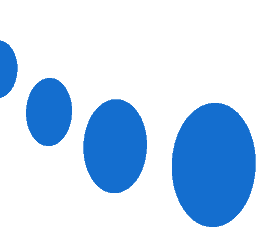Introduction
Calling is an essential tool to integrate into your LinkedIn prospecting sequence. LinkedIn prospecting
to maximize your chances of converting prospects into new customers. Indeed, although the LinkedIn social network is a powerful digital prospecting tool, you mustn’t neglect direct contact with prospects by telephone. In a B2B context, telephone prospecting can be a powerful lever for qualifying prospects and establishing a more personalized first contact. In fact, as a complement to digital prospecting via LinkedIn, the call makes it possible to create a more human relationship with targets and better understand their needs and expectations.
The difference between cold call and warm call
In prospecting, the cold call consists of calling a person who has not yet had contact with the company. It’s a direct marketing technique, part of an outbound strategy. With a well-sourced and qualified prospect list, cold calling is a particularly effective tool for generating appointments with potential customers.
The warm call, on the other hand, aims to contact prospects who have already had initial contact with the company, via an email or LinkedIn message for example. This technique is part of a multi-channel prospecting sequence. The warm call is a particularly interesting tool for high-potential prospects.
Whether “cold” or “warm”, the main disadvantage of the call is the time it takes… Indeed, between preparation, time spent on the phone, and follow-up emails and reminders, your sales team’s time can quickly become too short. In this case, a good alternative is to use an outsourced prospecting agency, such as Altame, which specializes in cold calling and prospecting via LinkedIn. By calling on this type of service, you enable your Sales team to avoid time-consuming tasks and concentrate on customer appointments with ultra-qualified prospects.
From LinkedIn sequence to call
You’ve got to admit, it’s quite comfortable to sit behind your computer and prepare your LinkedIn sequence! And with good reason: even if digital prospecting via LinkedIn requires certain skills, it also has great advantages: everything can be tested and everything can be modified! And with solutions like MirrorProfiles, the issue of prospecting volume is solved.
Calls, on the other hand, are often seen as the bête noire of salespeople. Between the apprehension of the “direct” aspect of the telephone conversation, and the prospect’s potential objections, the obstacles to calling can be significant.
The transition from LinkedIn message to warm call requires specific skills and a mastery of good telephone prospecting practices. Not all sales reps are trained in call techniques, and sales teams often find themselves struggling to cope. To focus your team’s efforts on their strengths and on the assignments where they can add most value, don’t hesitate to outsource the “cold” prospecting part. For example, you can call on an outsourced SDR agency like Altame. With this type of agency, you can stop wasting time prospecting and qualifying prospects, and concentrate on the issues that are most important to your business.
Warm call best practices
Before the call
The mindset
Before picking up the phone, it’s essential to be in the right frame of mind. As a salesperson, you need to position yourself as a solution provider for the prospect, not just a salesperson. The purpose of this first call is not to sell anything, but to make sure you’ve understood the prospect’s problem and that your offer can help them solve it.
Targeting prospects
After a LinkedIn sequence, you’re not going to call your entire list of prospects! The idea is to identify the prospects you’re going to call by determining strong business signals. Depending on the sector or position targeted during the LinkedIn sequence, which leads will be most effective in achieving your revenue (or other) objectives? Once you’ve defined your selection criteria, take the 20% of the most promising prospects contacted via LinkedIn and give them a call! Or even better, if you have MirrorCRM you can automatically have this list ready.
Preliminary survey
Before making the call, take a little time to visit the prospect’s LinkedIn profile and company website. The aim of this research is to find points of agreement so as to have a personalized icebreaker right from the start of the call. A good knowledge of the prospect and his sector of activity will also enable you to better adapt your sales pitch. Remember to note all relevant information in your CRM, so that you have everything at hand during the call. Thanks to this, you’ll be able to create a more personalized and authentic relationship with your prospect, and therefore increase your chances of securing an appointment!
The timing
A good telephone prospecting strategy means planning your calls according to your digital prospecting actions, especially on LinkedIn. Ideally, don’t let too much time pass between the LinkedIn message and the call: 48 hours maximum. So every 3 days, take stock of your LinkedIn sequence and create a list of prospects for a warm call session!
During the call
The aim of the warm call
In telephone prospecting, the golden rule is to avoid wasting your time and that of your prospect. So from the very first seconds of the call, we announce the objective of the call to make sure everyone’s on the same wavelength. The aim of the first call is not to sell something or sign a contract, but just to check whether there’s an interest in working together to set up a meeting at a later date.
Ice breaker and pitch
Once the objective has been set, you can start the discussion by reminding them that you approached the prospect via LinkedIn a few days ago. We can also add a personalized ice breaker based on information collected before the call, on the prospect’s background or on company news. Next, we present our solution in a few sentences, using a simple pitch that highlights the benefits of the offer for the customer. The sales pitch should really focus on your value proposition and not get bogged down in details. It’s vital to tailor your calls to each prospect’s specific characteristics and needs.
Preparing for the sequel
To conclude your presentation, you can ask the potential customer what they think. By asking this open-ended question, you give your interlocutor the chance to react and initiate an exchange. Depending on his return, you can bounce back and decide whether or not to set up an appointment.
Once the appointment has been set, it’s time for the sales pitch, with the aim of moving on to closing and signing a contract with the prospect! But to make this last step easier, it’s essential to prepare the ground well in advance. Every exchange with the contact person, whether on LinkedIn or in a call, is important and reflects the company’s image and the importance you give to the potential customer. This preparatory phase is both the most important and the most time-consuming. And because this stage of prospecting requires special techniques, it can also be easily outsourced. By entrusting this task to well-equipped experts in your sector, such as the members of the Altame team, you can ensure simplified, highly qualified customer appointments. Closing, on the other hand, must remain in-house, with people who know the company’s offer and its subtleties inside out!
What's the difference between prospecting via your own LinkedIn profile or via a MirrorProfiles profile?
Technically, whether you use a LinkedIn profile rented from MirrorProfiles or your own profile, it makes no difference to your prospecting sequence (except that you can contact more people, of course!).
But when you call, the risk is that the prospect won’t understand why you’re contacting them.
To avoid this problem, all you need to do is adapt the ice breaker at the start of the call, introducing yourself as the superior of the profile used for the LinkedIn sequence.
For example, “I’m John Doe’s supervisor who contacted you via LinkedIn, I’m calling because…”
For the prospect, the fact that it’s the manager who calls is reassuring and rewarding, as it shows them that their profile is of particular interest to your company.
Conclusion
Integrating the call into your LinkedIn prospecting sequence can be a real asset for finding new customers and building customer loyalty. By combining digital prospecting techniques via LinkedIn and telephone prospecting, you can maximize your chances of success in your sales prospecting initiatives.





